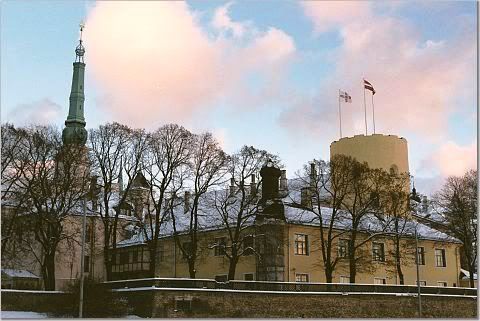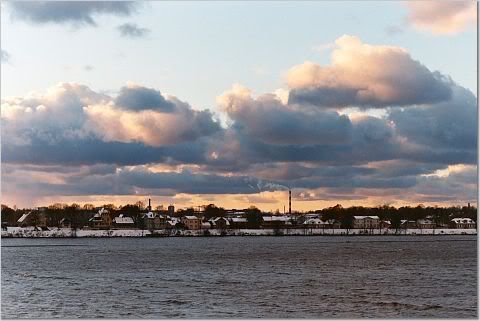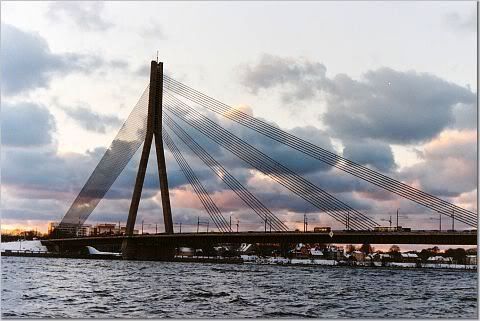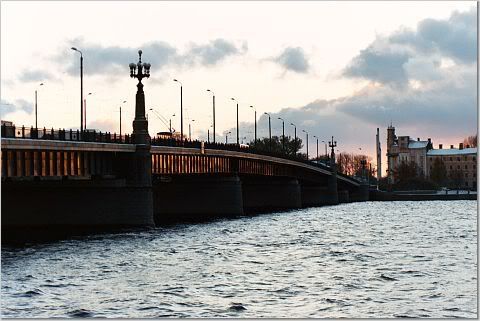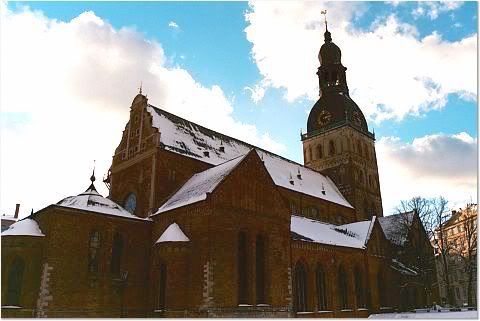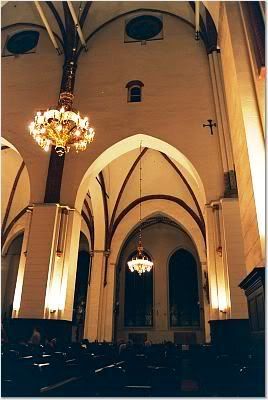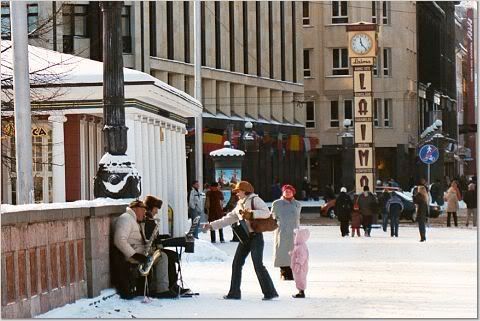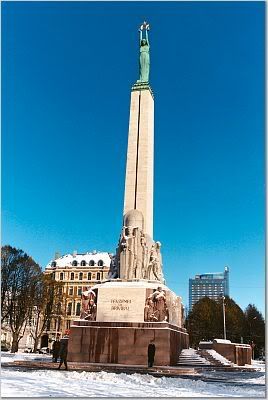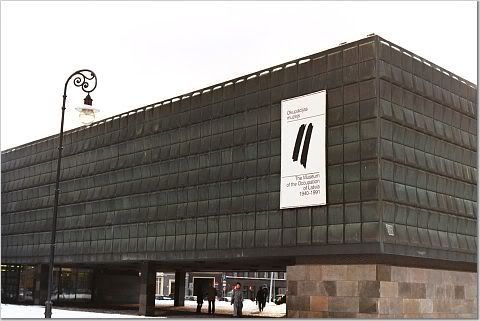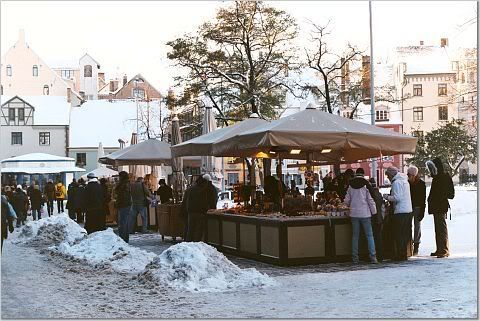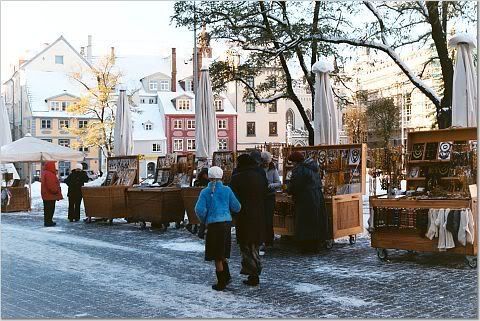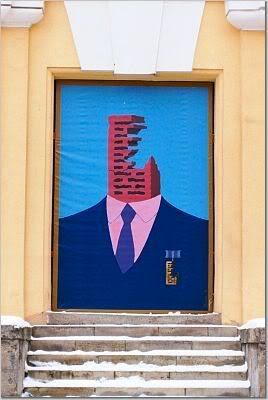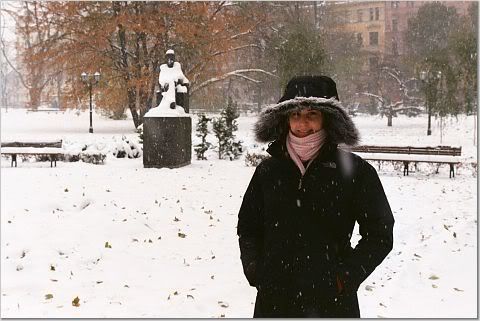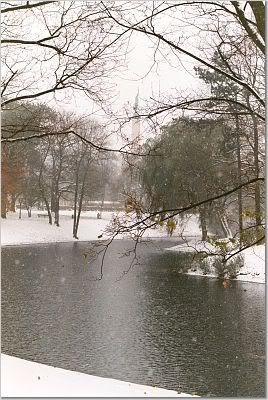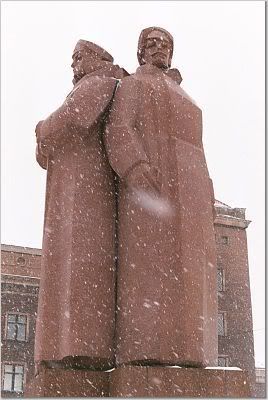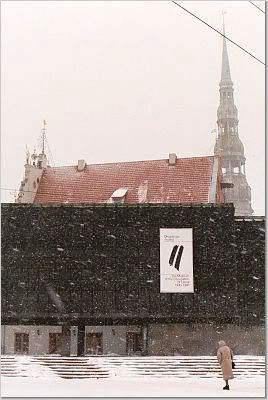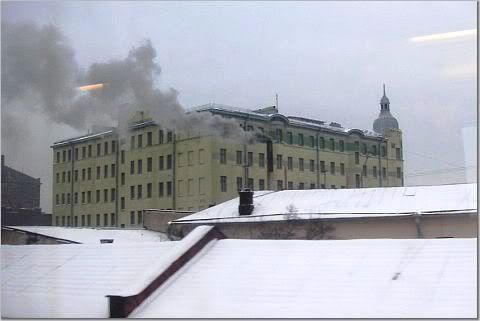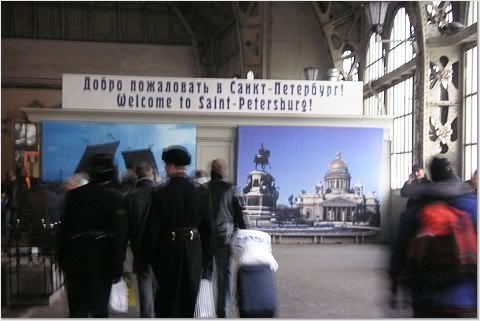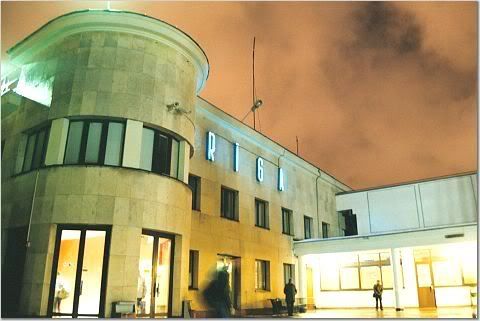Yesterday I started looking through some of my recently developed pictures from Tallinn when it occurred to me that I never blogged about our trip to another Baltic capital- Riga. But hey, it's never too late, right? And I figure I'd better get this info out there before I a) forget and b) go on our other upcoming trips and have even MORE to write about.
As I just pointed out, Riga is in the Baltics- it's the capital of Latvia. It's the largest city in the Baltics, and was founded in the 1200s. Certainly there were settlements there before then, but apparently it was officially declared a city in the 13th century, since it celebrated its 800 year anniversary in 2001. After being taken over by the Soviet Union in the '40s, the population of native Latvians was swamped by Russians, and today Latvians are still a minority in their own capital. Still, they've done quite well for themselves since regaining independence in 1991.
We opted to take an overnight train to Riga, just 'cause we'd never slept in a train before. Here are our accomodations...
Here's the train hallway:
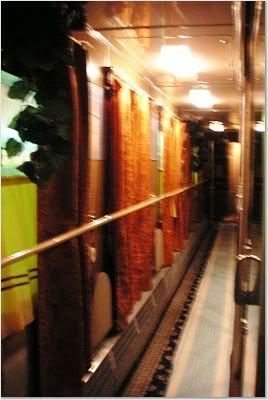
Here's me in our room, with one seat/bed to each side:

Here's the snacks they put out to tempt you with (which are NOT free):
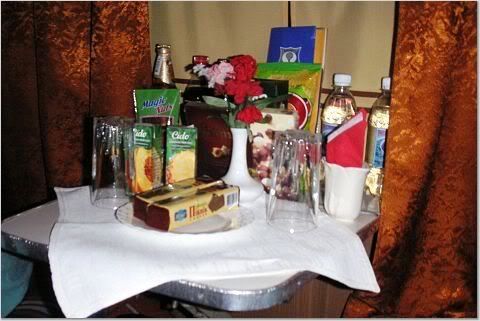
Here's me bedding down for the night. I love that my scrubs matched the sheets.
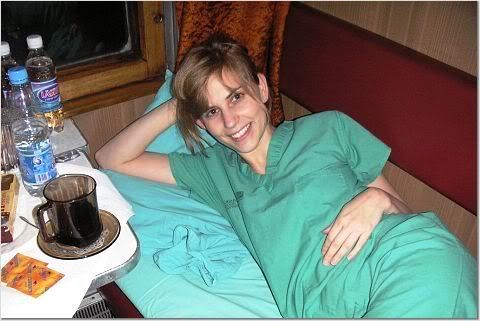
It didn't turn out to be quite the delightful night of sleep we'd hoped for. First of all, the train makes multiple stops throughout the night, so at 1:00 AM or whatever the train will come screeching to a halt to pick up more passengers in a village. To make things worse, it was stiflingly hot in our car. The heater under the window was CRANKED and there is no way to control it. Besides being too hot to sleep, I practically got a nosebleed from it being so dry. Thus in the middle of the night, I had Jonathan get one of our included towels sopping wet and drape it over the heater. It didn't make it much cooler, but at least it wasn't painfully dry any longer. I can't understand how Russians don't have problems on trains like that. They eat pickled mushrooms and throw back vodka, then go to sleep in an 85 degree, bone-dry room, yet wake up without a hangover? They truly are a superior physical specimen. Anyway, just as we'd settled down in our humid room, the train stopped at the border for customs. The customs agents came through all the rooms and opened the doors and threw on the lights and demanded to see passports and asked us all kinds of questions. Then the train crept forward several yards until it was officially over the Latvian border; then Latvian customs agents did the same thing. All told, it took about an hour. After all THAT, at around 5:00 AM, we finally drifted off to sleep. At least for 3 hours until we approched our destination.
We had a jolt of energy, though, when we looked out our window at freshly fallen snow-the first of the season.
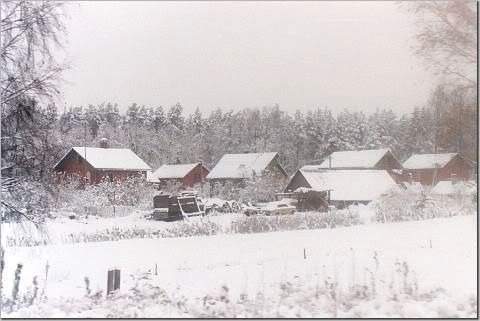
Once we arrived in town, we found our hotel, took a brief nap, then hit the town. Riga is a beautiful city, and the snow made it even more so.
Here's a street near our hotel...
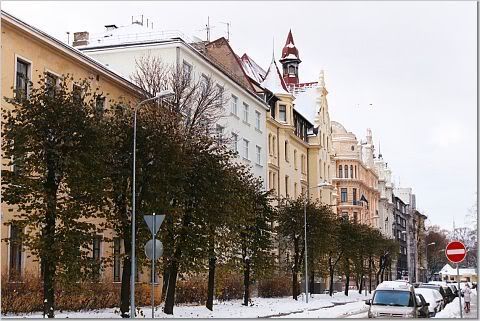
and the park we walked through to reach the old town.
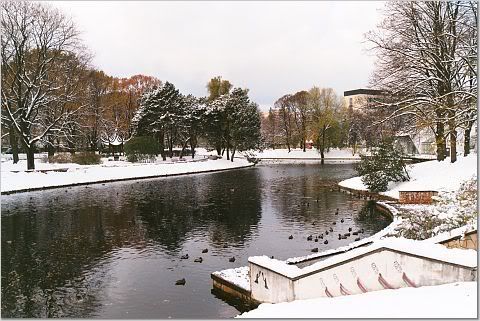
We found a great booklet with a planned self-tour around the old town, which more or less defined our events for our long weekend. The entire Old Riga is a UNESCO World Heritage Site; some of its buildings date back to the 13th century.
Our first stop was the main city square and the House of Blackheads. The Blackheads were a guild of unmarried foreign merchants; the guild was actually started in Tallin before spreading to Riga and beyond. Unfortunately the original house was destroyed in WWII; this is a replica.
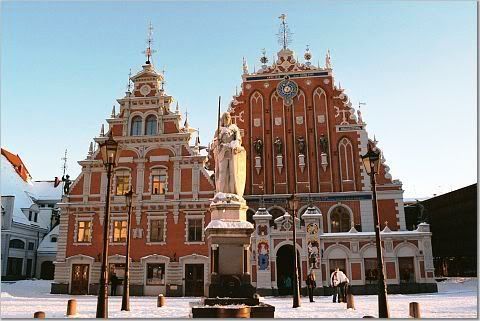
Next to the House of Blackheads is St. Peter's Church. The tower has burned and been rebuilt many times, but is plenty safe today; it even has an elevator to take you to the top for a great view of town.
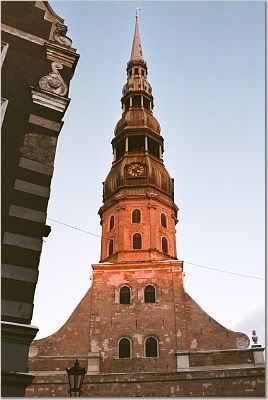
Inside St. Peter's:
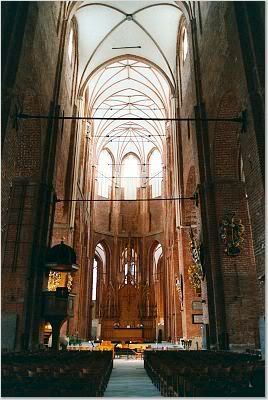
Views from the top.
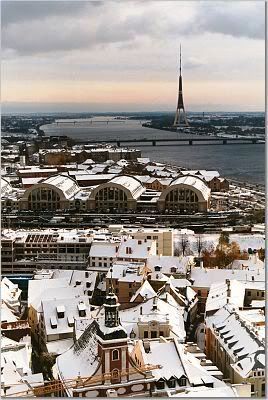

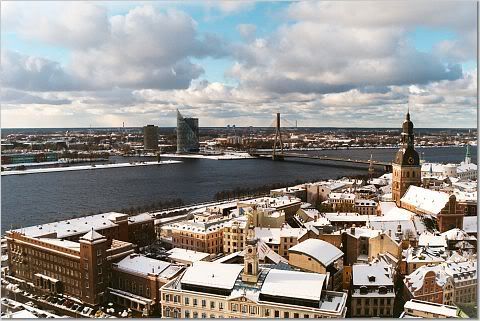
Riga was once surrounded, as many medieval cities were, by a large fortress wall. Most of Riga's is gone, but there are parts still around, include the Gunpowder Tower, which now houses the Museum of War.
Here's the tower. It's really quite large- notice the man in the lower right corner.
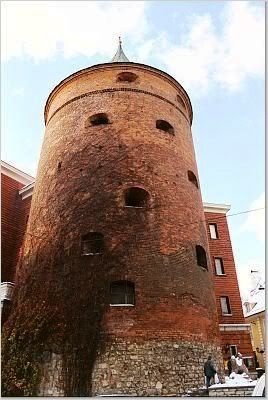
Here is a remaining part of the fortification wall...
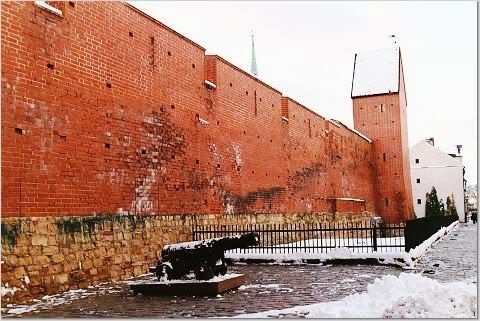
and at the end of the wall, the Swedish Gate, added in 1698.
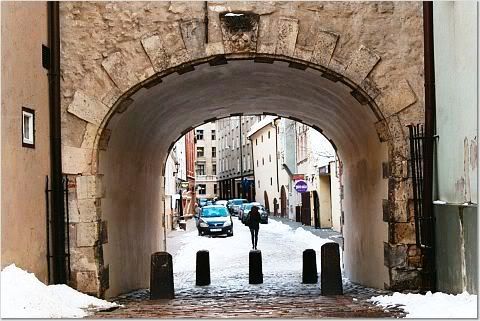
Through the gate and around a corner you'll find the Three Brothers, a row of houses considered to be the best example of medieval residential buildings in Riga. The oldest is from the 15th century.
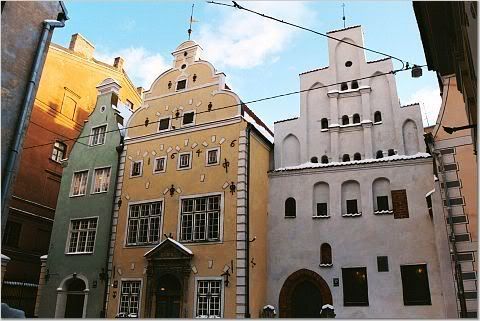
The Brothers are quite colorful, as are many buildings in the city. Here's a row of shops near the fortification wall:
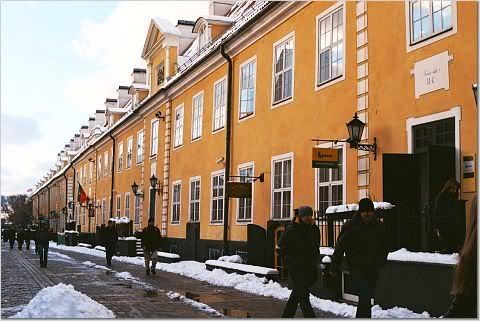
and more residential buildings in Old Riga.
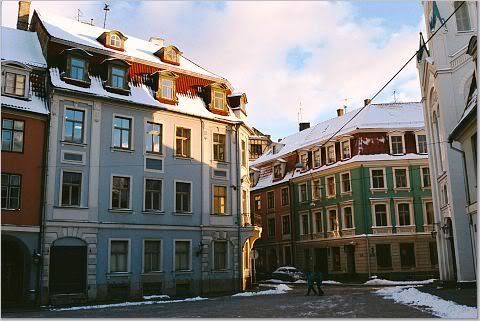
The walking tour ends at the Riga Castle, completed in 1515, and now home to Latvia's (female) president and the History Museum of Latvia.
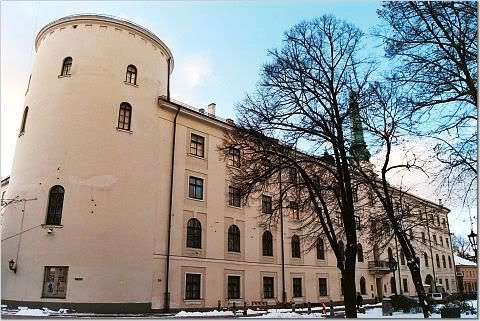
Whew, remembering all this is hard work. I'm going to take a dinner break and continue with the rest of Riga in part two...
